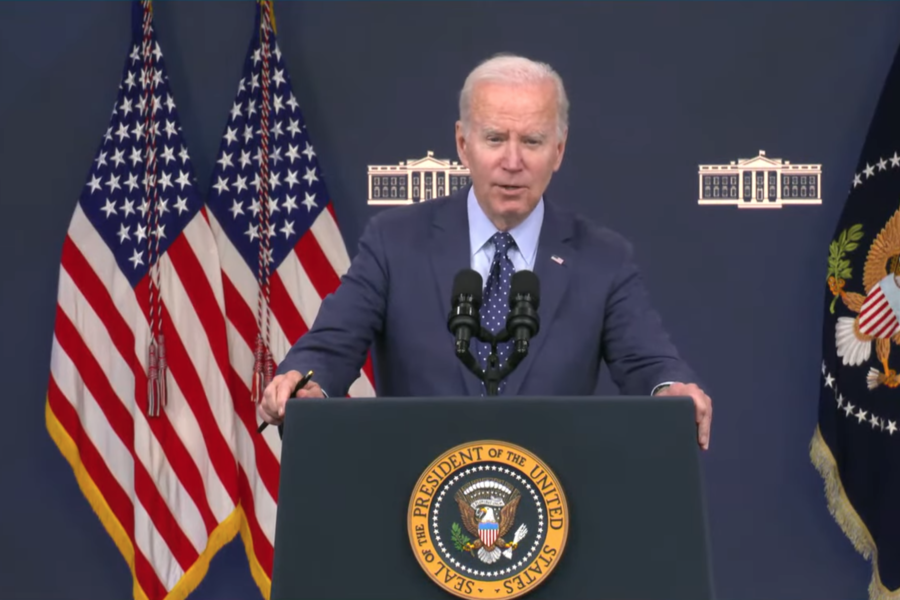In comments aimed at reassuring the American public and setting the stage for future diplomatic engagements with Beijing, President Joe Biden said Feb. 16 the three aerial objects the U.S. recently shot down were not part of China’s spy balloon fleet.
“The intelligence community’s current assessment is that these three ones were most likely balloons tied to private companies, recreation, or research institutions studying weather or conducting other scientific research,” Biden said in his first formal comments on the unprecedented series of air-to-air engagements over the skies of North America and the downing of the Chinese spy balloon off the coast of South Carolina on Feb. 4.
Biden added that he expects to speak soon with Chinese leader Xi Jinping about the U.S. decision to shoot down the Chinese spy ballon balloon and to continue the diplomatic dialogue between Beijing and Washington. Thus far, the Chinese have declined high-level talks on the incident, rebuffing Secretary of Defense Lloyd J. Austin III’s attempts to contact his Chinese counterpart.
“We’re not looking for a new Cold War, but I make no apologies,” Biden said. “We will compete and will we responsibly manage that competition so that it doesn’t veer into conflict.”
After the Chinese balloon was detected and traversed North America, the U.S. military downed three objects in the span of three days over the weekend Feb. 10-12. The Pentagon acknowledged it did not know whether any nations might have sent them as spycraft but said they posed a potential danger to civilian air traffic.
The Chinese balloon flew at an altitude of 60,000-65,000 feet, was up to 200 feet tall, and weighed several thousand pounds, according to U.S. officials. But the other “objects,” as the U.S. has termed them, were smaller and flew at lower altitudes. The objects shot down over Yukon, Canada, and Alaska were operating around 40,000 feet, while the object over Lake Huron was at 20,000 feet, according to U.S. accounts.
It now appears those unidentified objects were not a danger to U.S. national security, and Biden said he is directing the administration to develop better procedures for handling unidentified objects in the future.
The goal, he said, will be to distinguish “between those that are likely to pose safety and security risks that necessitate action and those that do not.” To do that, Biden said the U.S. will establish a better inventory of unmanned airborne objects above the U.S. that is accessible and up to date, improve U.S. capability to detect unmanned objects, update U.S. rules and regulations for launching and maintaining unmanned objects, and establish new global norms.
“These steps will lead to safer and more secure skies for our air travelers, our military, our scientists, and for people on the ground as well,” he added.
U.S. officials, including the head of North American Aerospace Defense Command (NORAD) Air Force Gen. Glen D. VanHerck, said previously that NORAD had adjusted its radars after the Chinese balloon incident. In making that adjustment, U.S. officials said NORAD no longer filtered out slow, small objects, which led to increased visibility of the objects that were subsequently shot down.
“We’re now just seeing more of them partially because the steps we’ve taken to increase our radars,” Biden said.
A group of hobbyists, the Northern Illinois Bottlecap Balloon Brigade, has reported that one of their balloons went “missing in action” after passing near an uninhabited island in Alaska, spurring speculation that it might be one of the objects that was shot down by an F-22.
